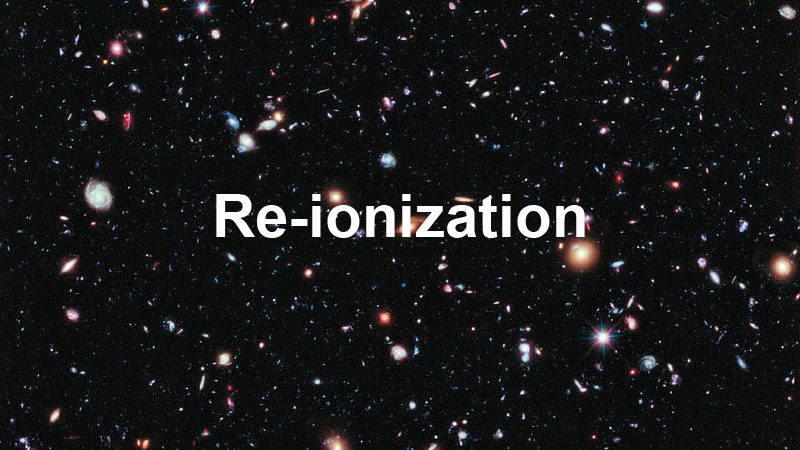Re-ionization
Episode #6 of the course A short history of the universe
Throughout the Cosmic Dark Ages before the stars, the universe was filled with “neutral” hydrogen—one electron and one proton. As that hydrogen collected together due to gravity, the first stars caught fire and then slowly gathered into the rivers of galaxies we see stretching across the cosmos today. As these stars lit up, their radiation knocked electrons off of the hydrogen gas between stars, turning it into a plasma of free protons and electrons like it had been before the Dark Ages; this is re-ionization.
The first stars were 30-300 times larger than our sun because the density of hydrogen in space was much higher than it is today. Because they had more fuel available to them, these stars burned hot and fast and died young. Meanwhile, the radiation they put out was transforming the universe. The neutral hydrogen filling space before re-ionization absorbed the light of the first stars, helping to keep the first few million years dark. But as that light ripped the electrons from their hydrogen atoms, it became possible for light to travel more freely across space again.
Meanwhile, the cosmic microwave background radiation from the Big Bang (Lesson 5) was also bouncing off of the space-filling hydrogen and changing; every time a hydrogen atom absorbed a photon, it released a new photon with a wavelength of 21 centimeters (8.27 inches), which we can detect today, although now those wavelengths have become stretched out (red-shifted) into radio waves. Very recent analyses of the 21-centimeter (8.27-inch) signal by Dr. Jan Tauber’s team using data from the European Space Agency’s Planck satellite reveal a more detailed map of the universe at that time than any previous measurements—and several surprises. For one thing, the new data makes the universe a little older—13.82 billion years—due to slower expansion than previously thought. This means that there is a little less dark energy in the universe than previously calculated—68% rather than 75%. But along with the 27% of the universe made of dark matter, that still leaves only 5% of the universe made of the stuff we can see!
Re-ionization didn’t happen all at once. The first stars were loners—few and far between compared to today. So they ionized the space-filling hydrogen in expanding bubbles, like holes in Swiss cheese, until the fog of neutral hydrogen was finally cleared. And by that time, stars had already been lighting up and gathering into young galaxies for a few hundred million years, so our visual images of the universe 13 billion years ago taken by the Hubble space observatory show fully formed galaxies and quasars just a bit smaller and less organized than the more modern galaxies closer to us.
Recommended book
“The Grand Design” by Stephen Hawking
Share with friends

